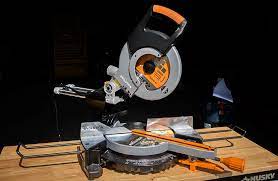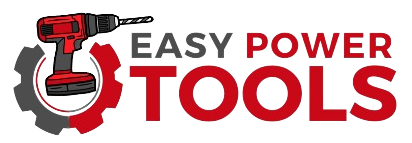Your presence here shows that you want to know that Can You Put a Metal Cutting Blade on a Miter Saw?
Well!
You’re on right place because we already have worked for you. Miter saws are versatile tools that have become essential in the woodworking and construction industry. They are primarily designed for cutting wood at various angles, making precise miter and bevel cuts.
However, many users wonder if they can use a miter saw to cut metals by simply swapping out the blade. In this article, we’ll explore the possibilities and limitations of putting a metal cutting blade on a miter saw.
We’ll cover the types of metal cutting blades, safety considerations, and whether it’s a good idea to use your miter saw for cutting metal.
Understanding Miter Saws
Before we delve into the potential use of miter saws for metal cutting, let’s first understand how these tools work.
Miter saws, also known as chop saws or drop saws, consist of a circular blade mounted on a hinged arm that can pivot to make angled cuts.
They are typically used for cutting wood, but with the right blade, they can cut various materials like plastic and aluminum.
The primary types of miter saws include compound miter saws, sliding compound miter saws, and dual bevel sliding compound miter saws.
The Blade and its Role
The blade is a crucial component of a miter saw. It determines the type of material the saw can cut effectively. Blades come in various sizes, tooth counts, and designs. For cutting wood, a typical blade has numerous sharp teeth designed for clean, fast cuts.
However, metal cutting blades are a different story. These blades are specifically engineered to cut through various types of metal, including steel, aluminum, and more.
They have fewer, larger teeth, and they are often made of materials like carbide or abrasive materials that can withstand the hardness of metals.
Types of Metal Cutting Blades
There are two main types of metal cutting blades: abrasive blades and carbide-tipped blades.
- Abrasive Blades:
- Abrasive blades are designed for cutting softer metals like aluminum, copper, and thin steel.
- They have abrasive particles embedded in the blade, and they grind through the metal to create the cut.
- Abrasive blades are not ideal for thick or hardened steel as they tend to wear out quickly.
- Carbide-Tipped Blades:
- Carbide-tipped blades are more versatile and suitable for cutting a wide range of metals, including steel, stainless steel, and more.
- They have teeth made of carbide, a hard and durable material, which allows them to cut through tougher metals with greater ease.
- Carbide-tipped blades typically last longer than abrasive blades and provide cleaner cuts.
Can You Put a Metal Cutting Blade on a Miter Saw?
Now that we understand the different types of blades, let’s address the primary question: Can you put a metal cutting blade on a miter saw? The short answer is yes, you can, but there are some important considerations and limitations to keep in mind.
- Blade Compatibility:
- Miter saws are designed to work with blades that have the appropriate arbor size (the hole in the center of the blade) and blade diameter. Ensure that the metal cutting blade you choose is compatible with your miter saw.
- Motor Power:
- Miter saws may not have the same power as dedicated metal cutting tools, such as chop saws or metal cutting bandsaws. A powerful motor is necessary to cut through metal effectively. Using a miter saw with a less powerful motor might result in slow and inefficient cuts.
- Safety Precautions:
- Cutting metal produces sparks and generates heat. It’s crucial to take safety precautions, such as wearing appropriate safety gear, using eye protection, and ensuring your work area is clear of flammable materials. You should also have a fire extinguisher nearby.
- Cutting Speed:
- Cutting metal requires a slower blade speed than cutting wood. Most miter saws have a fixed blade speed, which may not be ideal for metal cutting. Cutting too fast can damage the blade and reduce its lifespan.
- Cooling:
- Metal cutting blades generate a significant amount of heat. To prevent overheating and blade damage, it’s essential to use cutting fluid or lubrication to keep the blade cool during the cutting process.
- Blade Wear and Tear:
- Cutting metal can cause more wear and tear on the blade compared to cutting wood. Be prepared for more frequent blade replacements or sharpening.
Limitations and Risks
While you can technically put a metal cutting blade on a miter saw, there are limitations and associated risks:
- Material Thickness:
- Miter saws are best suited for cutting thin metal materials. Attempting to cut thick or heavy steel with a miter saw is not advisable and can damage the saw or blade.
- Precision:
- Miter saws are designed for making precise cuts in wood. They may not deliver the same level of precision when cutting metal. The metal may warp or distort during the cutting process.
- Safety Concerns:
- The sparks and heat generated when cutting metal can pose a fire hazard. Using a miter saw for metal cutting requires strict safety measures to prevent accidents.
- Blade Wear:
- Cutting metal will significantly reduce the lifespan of your blades. Be prepared to replace or sharpen them more frequently.
Alternative Tools for Metal Cutting
For cutting metal with more efficiency and safety, it’s recommended to use tools designed for this purpose. Some alternatives to consider include:
- Chop Saw:
- A chop saw is a dedicated tool for metal cutting. It’s designed to handle the specific demands of cutting metal and is often more powerful than a miter saw.
- Metal Cutting Bandsaw:
- Bandsaws designed for metal cutting offer precise and controlled cuts, making them a great choice for various metalworking tasks.
- Angle Grinder:
- An angle grinder with a metal cutting disc can be a versatile tool for cutting metal. It’s portable and can handle different metal thicknesses.
Conclusion – Can You Put a Metal Cutting Blade on a Miter Saw?
In conclusion, while it’s technically possible to put a metal cutting blade on a miter saw, it comes with limitations and safety considerations.
Miter saws are primarily designed for woodworking, and using them for metal cutting is not the most efficient or safe option.
For cutting metal, it’s best to invest in dedicated tools such as chop saws, metal cutting bandsaws, or angle grinders with appropriate discs.
Always prioritize safety when working with any power tools, and follow the manufacturer‘s recommendations for tool usage to ensure your safety and the longevity of your equipment.


